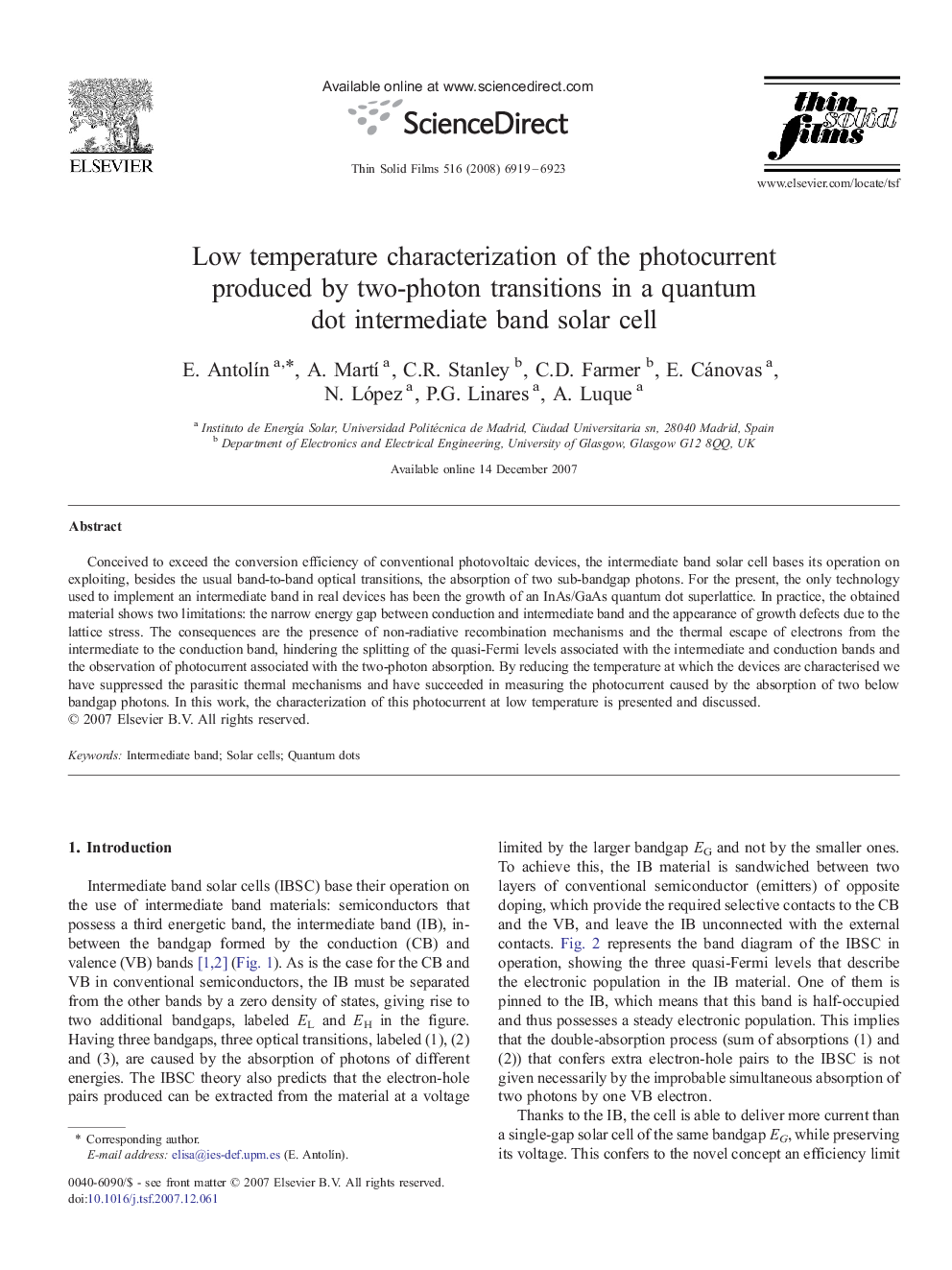| Article ID | Journal | Published Year | Pages | File Type |
|---|---|---|---|---|
| 1674444 | Thin Solid Films | 2008 | 5 Pages |
Conceived to exceed the conversion efficiency of conventional photovoltaic devices, the intermediate band solar cell bases its operation on exploiting, besides the usual band-to-band optical transitions, the absorption of two sub-bandgap photons. For the present, the only technology used to implement an intermediate band in real devices has been the growth of an InAs/GaAs quantum dot superlattice. In practice, the obtained material shows two limitations: the narrow energy gap between conduction and intermediate band and the appearance of growth defects due to the lattice stress. The consequences are the presence of non-radiative recombination mechanisms and the thermal escape of electrons from the intermediate to the conduction band, hindering the splitting of the quasi-Fermi levels associated with the intermediate and conduction bands and the observation of photocurrent associated with the two-photon absorption. By reducing the temperature at which the devices are characterised we have suppressed the parasitic thermal mechanisms and have succeeded in measuring the photocurrent caused by the absorption of two below bandgap photons. In this work, the characterization of this photocurrent at low temperature is presented and discussed.
